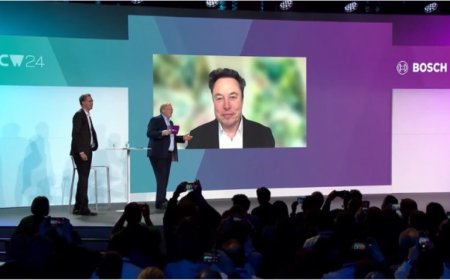Revolutionizing Content Creation: The Dawn of AI-Driven Text Generation from Visuals

In the rapidly evolving landscape of artificial intelligence (AI), a groundbreaking development has emerged, transforming the way businesses and creators approach content generation. A San Francisco-based startup, Writer, has unveiled its latest innovation in generative AI technology, specifically designed with enterprise needs in mind. This new capability, known as Palmyra-Vision, is set to redefine the boundaries of content creation by generating text from images, including detailed charts and graphs. This article delves into the intricacies of this technology, its applications, and the strategic vision behind its development.
Bridging the Gap Between Visuals and Text
At the heart of Writer’s mission lies a commitment to multimodal content creation. The company’s co-founder and CEO, May Habib, emphasizes the strategic decision to focus on generating text from various forms of input, including images. This approach, dubbed multimodal input with text output, aims to harness the power of AI in interpreting visual content and translating it into insightful, accurate text. Palmyra-Vision represents a significant step forward in this direction, offering a solution that goes beyond mere image analysis to include the generation of textual content from visual data.
The Technology Behind Palmyra-Vision
Writer’s approach to achieving this feat involves a sophisticated multi-model system. Each model within this system plays a crucial role in identifying the components of an image and subsequently generating text with remarkable accuracy. According to Habib, the technology boasts a precision rate of four nines, highlighting the company’s commitment to delivering reliable and accurate results. This level of accuracy is crucial for a wide range of applications, from e-commerce to compliance checking, where the stakes for precision and reliability are high.
Transforming Industries with AI-Driven Insights
The potential applications of Palmyra-Vision are vast and varied. For e-commerce platforms, this technology offers a seamless solution for updating product descriptions based on changing images, eliminating the need for manual intervention. In the realm of data analysis, it can automatically interpret and summarize key takeaways from charts and graphs, providing businesses with actionable insights at a glance. Furthermore, Palmyra-Vision can be tailored to specific use cases, such as medical or insurance, to interpret and summarize handwritten notes with high accuracy, streamlining processes that traditionally require extensive manual effort.
Navigating the Challenges of AI Content Generation
Despite the impressive capabilities of Palmyra-Vision, Habib cautions against relying solely on AI for content generation. The potential for AI models to “hallucinate” or produce inaccurate content underscores the importance of incorporating human review into the workflow. This hybrid approach ensures the reliability of the generated content while leveraging the efficiency and scalability of AI. Writer is actively working towards automating this workflow to maintain consistency across customer experiences, striving for a balance between human oversight and AI-driven efficiency.
The Future of Writer and Palmyra-Vision
With $126 million in funding to date, Writer is poised for significant growth and expansion. The company is currently exploring partnerships with major cloud infrastructure platforms, aiming to scale its operations and extend the reach of its innovative solutions. The latest release of Palmyra, featuring image-to-text capabilities, marks a milestone in Writer’s journey, offering a glimpse into the future of content creation where AI plays a central role in bridging the gap between visual content and textual insights.
In conclusion, Writer’s Palmyra-Vision represents a pioneering step in the field of generative AI, offering businesses and creators a powerful tool for transforming visual content into accurate, insightful text. As the technology continues to evolve, the possibilities for its application seem boundless, promising a future where content creation is more efficient, accurate, and accessible than ever before.
What's Your Reaction?











































